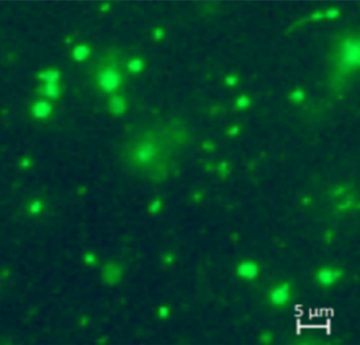Katarina Zimmer in The Scientist:
 Sometime around 2 billion years ago, a bacterium slipped inside a larger cell, started producing energy there, and became the indispensable powerhouse we know today as the mitochondrion, so the working theory goes. But that old story now has a new twist. Scientists have detected the organelles outside of cells, apparently functioning perfectly well while drifting around the blood of healthy people, according to findings published recently (January 19) in The FASEB Journal. The researchers who made the discovery propose that the independent mitochondria may be released by cells for signaling purposes, although more work is needed to validate that hypothesis. “It’s very exciting. . . . I think altogether the combined evidence is pretty strong that they definitely are whole mitochondria,” remarks Martin Picard, a physiologist at Columbia University who wasn’t involved in the new research. “I think there’s a lot more work to be done to know . . . whether they have a functional role to play,” he adds.
Sometime around 2 billion years ago, a bacterium slipped inside a larger cell, started producing energy there, and became the indispensable powerhouse we know today as the mitochondrion, so the working theory goes. But that old story now has a new twist. Scientists have detected the organelles outside of cells, apparently functioning perfectly well while drifting around the blood of healthy people, according to findings published recently (January 19) in The FASEB Journal. The researchers who made the discovery propose that the independent mitochondria may be released by cells for signaling purposes, although more work is needed to validate that hypothesis. “It’s very exciting. . . . I think altogether the combined evidence is pretty strong that they definitely are whole mitochondria,” remarks Martin Picard, a physiologist at Columbia University who wasn’t involved in the new research. “I think there’s a lot more work to be done to know . . . whether they have a functional role to play,” he adds.
The findings were the result of a multi-year project led by Alain Thierry, an oncologist who researches the development of cancer biomarkers at the French National Institute of Health and Medical Research. About seven years ago, he and his colleagues were studying cell-free mitochondrial DNA—long known to circulate in human blood—as a potential diagnostic marker for cancer.
More here.
